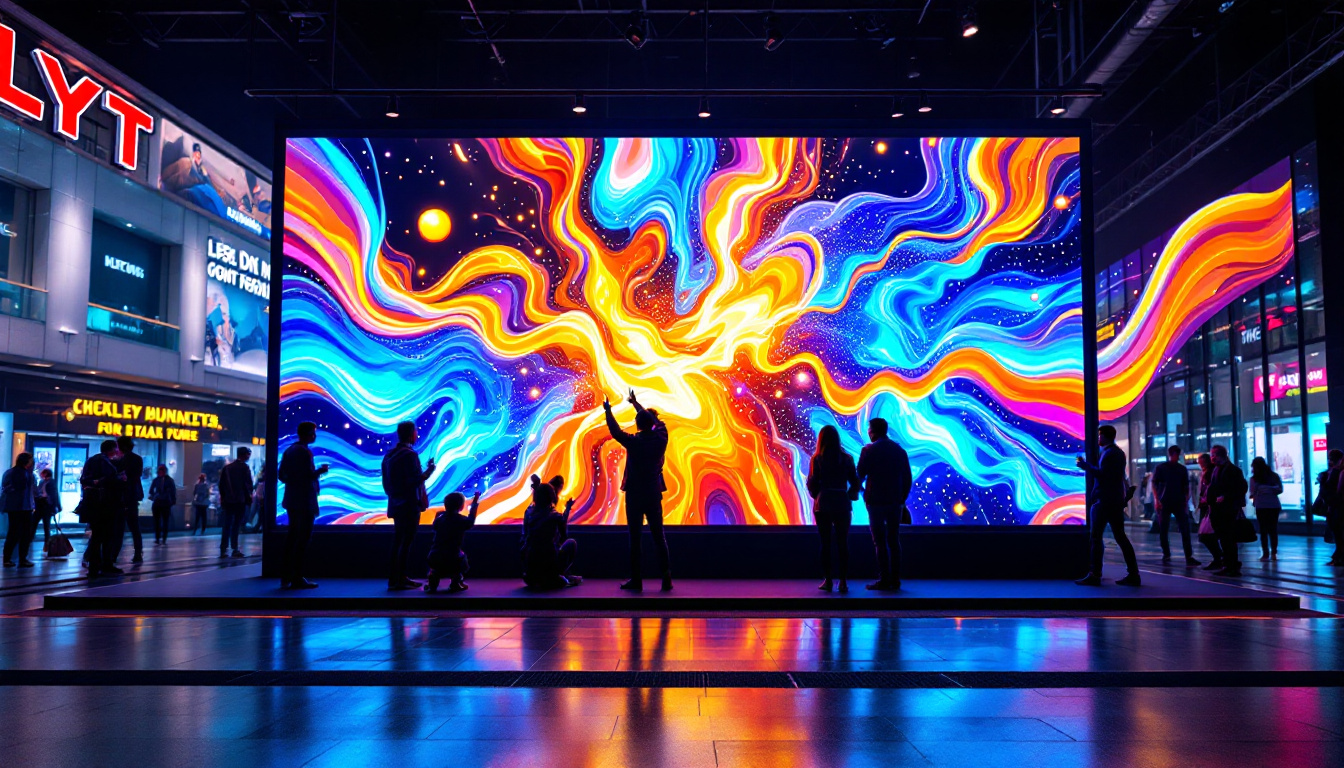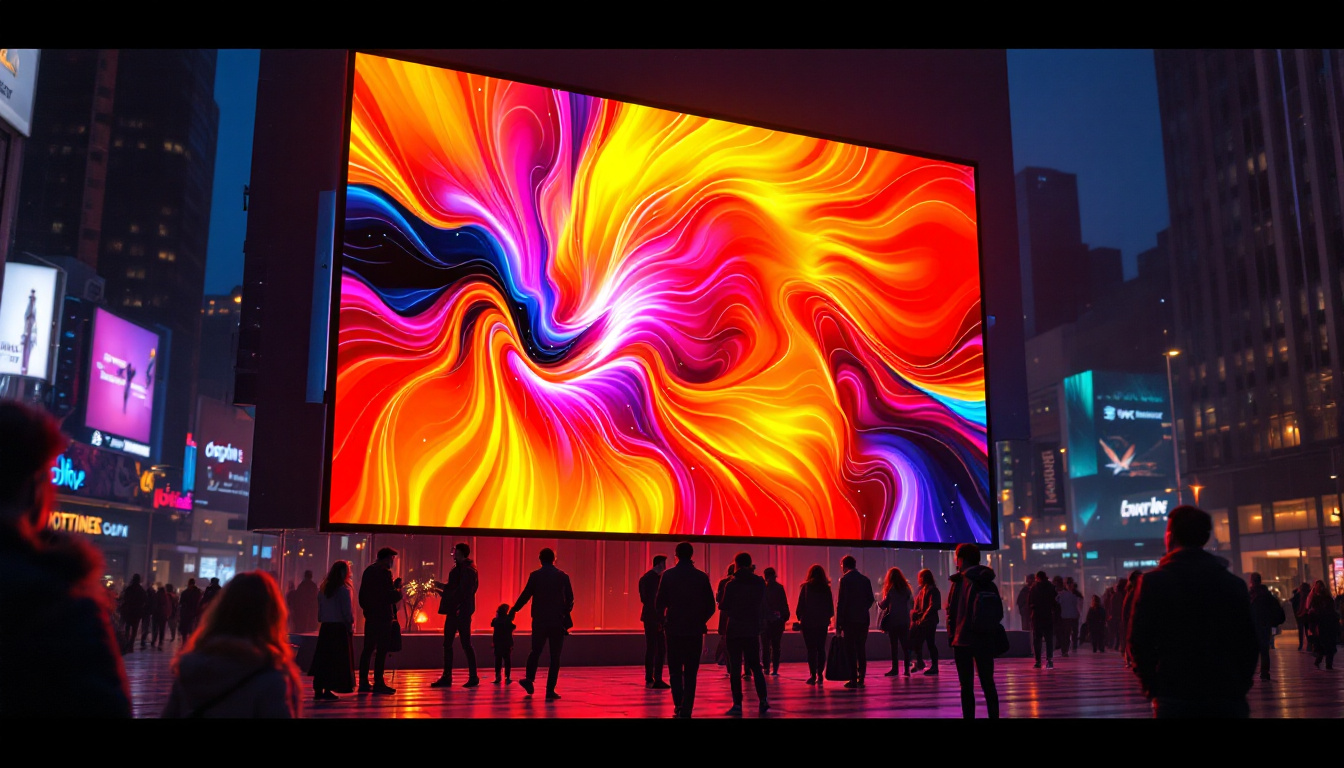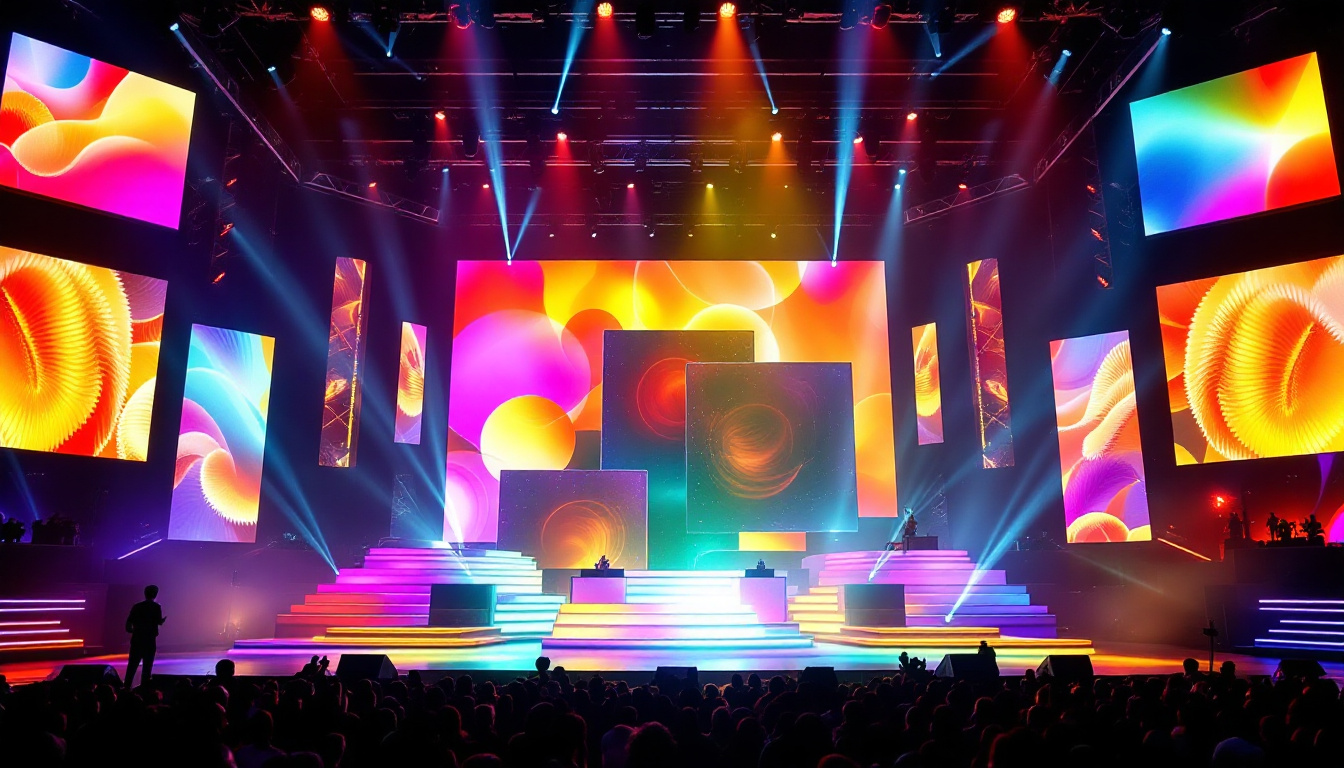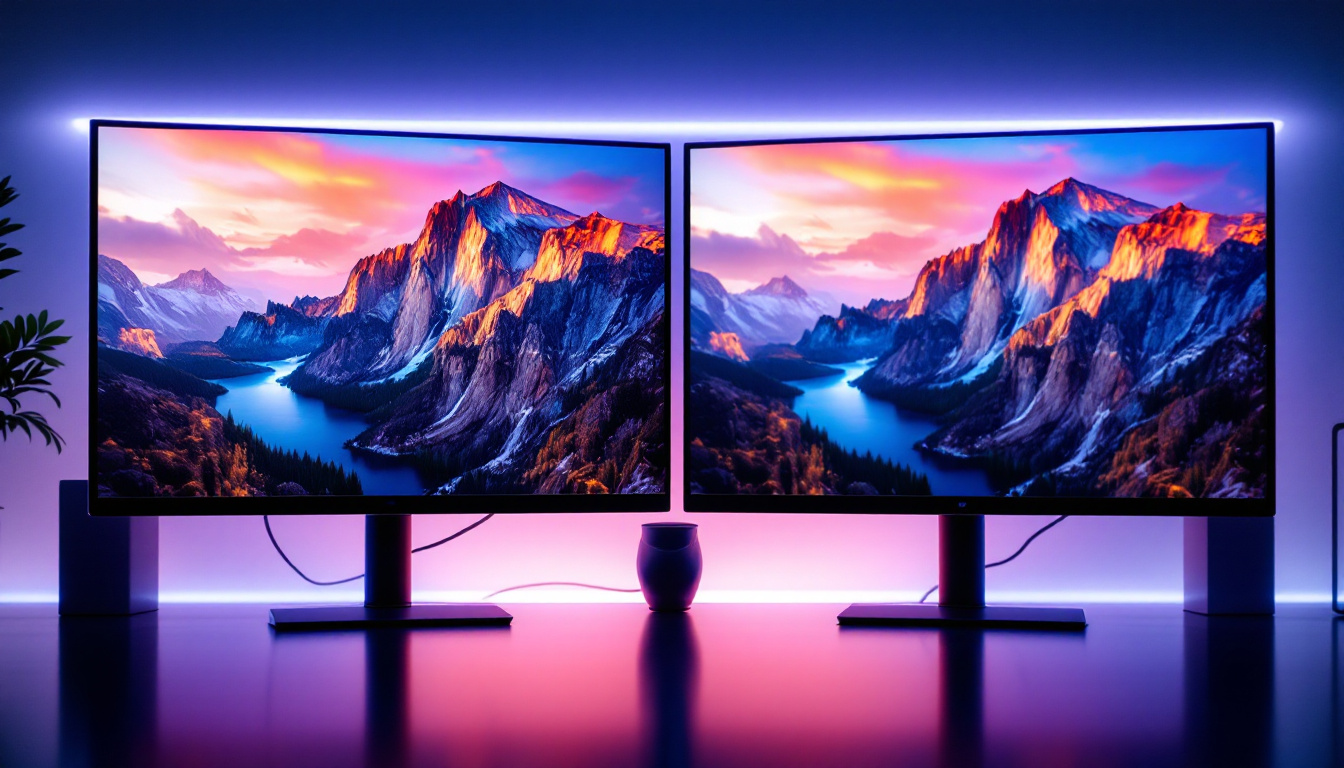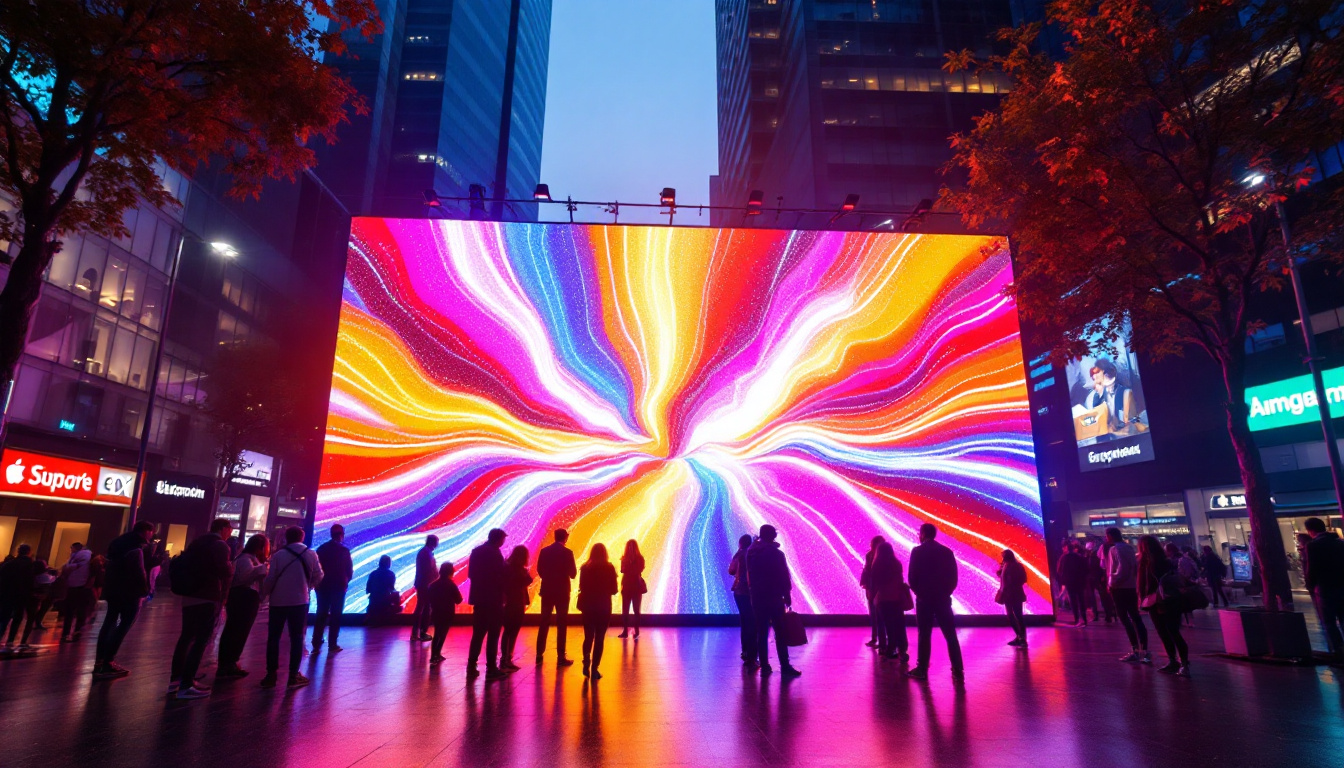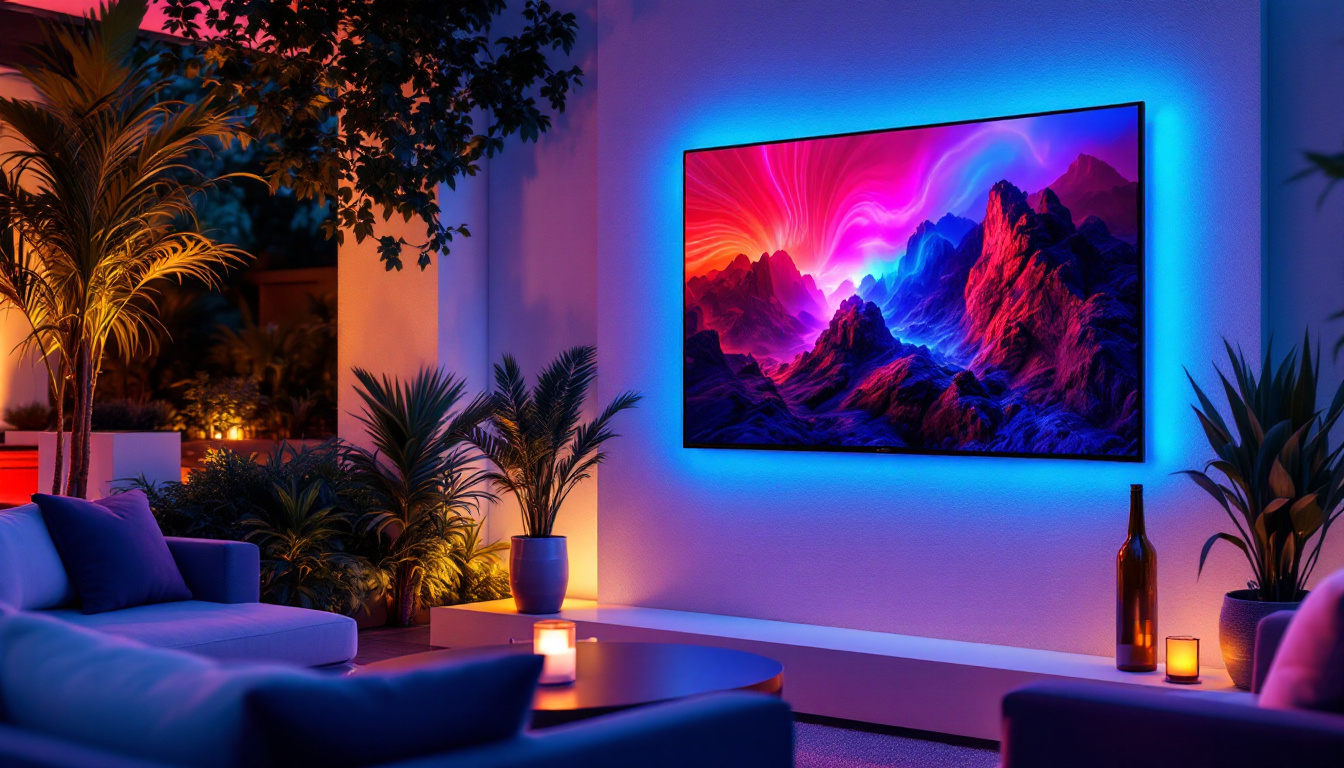In the ever-evolving world of television technology, LED displays have emerged as one of the most popular choices for consumers. With their vibrant colors, exceptional brightness, and energy efficiency, LED panels have transformed the way we experience visual media. This article delves into the intricacies of LED display technology, exploring its components, advantages, and the various types available in the market today.
Understanding LED Technology
LED, or Light Emitting Diode, is a semiconductor device that emits light when an electric current passes through it. This technology has revolutionized not only televisions but also various other electronic devices, including smartphones, computer monitors, and even large-scale outdoor displays. The fundamental principle behind LED technology is relatively simple, yet it has profound implications for image quality and energy consumption. LEDs are known for their longevity and efficiency, often lasting tens of thousands of hours while consuming significantly less power compared to traditional incandescent bulbs. This efficiency not only translates to lower electricity bills for consumers but also contributes to a reduced carbon footprint, making LED technology an environmentally friendly choice.
How LED Displays Work
At the core of an LED display is a matrix of tiny LED lights that work together to produce images. These lights can be arranged in various configurations, but they typically consist of red, green, and blue (RGB) diodes. By adjusting the intensity of each color, the display can create a wide spectrum of colors, allowing for rich and vibrant images. The precision with which these colors can be manipulated is a key factor in the stunning visual experiences that modern displays offer, making them ideal for everything from gaming to professional graphic design.
LED displays can be categorized into two main types: direct-lit and edge-lit. Direct-lit LED displays have LEDs placed behind the screen, providing uniform brightness across the entire panel. In contrast, edge-lit displays have LEDs positioned along the edges of the screen, using a light guide to distribute the light evenly. Each type has its advantages and disadvantages, influencing the overall performance and cost of the television. For instance, while direct-lit displays tend to offer better contrast and color accuracy, edge-lit models are often slimmer and more lightweight, appealing to consumers looking for sleek designs.
The Role of Backlighting
Backlighting is a crucial aspect of LED displays. It enhances the brightness and contrast of the images being displayed. In direct-lit models, the backlighting can be more uniform, which is beneficial for viewing in brightly lit environments. Edge-lit models, however, may struggle with uniformity, potentially leading to issues like “light bleed” in darker scenes. This phenomenon can detract from the viewing experience, particularly in cinematic settings where deep blacks are essential for immersion.
Advanced technologies, such as local dimming, have been developed to improve the performance of LED displays. Local dimming allows specific areas of the screen to dim or brighten independently, enhancing contrast and improving the overall viewing experience. This feature is particularly useful for watching movies or shows with significant variations in brightness. Additionally, some high-end models incorporate quantum dot technology, which further enhances color accuracy and brightness, providing an even more dynamic viewing experience. As manufacturers continue to innovate, the integration of artificial intelligence in display technology is also becoming more common, allowing for real-time adjustments to optimize picture quality based on the content being viewed.
Advantages of LED Displays
LED displays offer numerous advantages over traditional display technologies, such as LCD and plasma. These benefits have contributed to their widespread adoption among consumers and manufacturers alike.
Energy Efficiency
One of the most significant advantages of LED technology is its energy efficiency. LED displays consume less power compared to their LCD and plasma counterparts. This efficiency not only translates to lower electricity bills but also reduces the environmental impact associated with energy consumption.
In an era where sustainability is increasingly important, the energy-efficient nature of LED displays makes them an attractive choice for environmentally conscious consumers. Many manufacturers are also focusing on creating energy-efficient models to meet the growing demand for sustainable technology.
Image Quality
LED displays are known for their superior image quality. The ability to produce vibrant colors, deep blacks, and high contrast ratios makes them ideal for a wide range of viewing environments. Whether watching a blockbuster movie or playing a fast-paced video game, LED displays deliver an immersive experience that captivates viewers.
Furthermore, advancements in technology, such as HDR (High Dynamic Range), have enhanced the capabilities of LED displays even further. HDR allows for a broader range of colors and brightness levels, resulting in stunning visuals that closely resemble what the human eye can perceive in real life.
Longevity and Durability
LED displays are also known for their longevity and durability. Unlike traditional display technologies that may suffer from burn-in or fading over time, LED panels are designed to withstand prolonged use without significant degradation in performance. This durability makes them a sound investment for consumers looking for a long-lasting television solution.
Additionally, LED technology is less susceptible to environmental factors such as humidity and temperature fluctuations, further enhancing its reliability. This resilience is particularly beneficial for consumers who live in areas with extreme weather conditions.
Types of LED Displays
As the demand for LED technology has grown, various types of LED displays have emerged to cater to different consumer needs and preferences. Understanding these types can help consumers make informed decisions when purchasing a new television.
Standard LED TVs
Standard LED TVs are the most common type of LED display. They utilize either direct-lit or edge-lit technology to produce images. These televisions are available in a wide range of sizes and price points, making them accessible to a broad audience.
Standard LED TVs are suitable for everyday viewing, offering a good balance of performance and affordability. They are ideal for watching television shows, movies, and sports, providing a satisfying viewing experience for most consumers.
QLED and OLED Displays
QLED (Quantum Dot LED) and OLED (Organic Light Emitting Diode) displays represent the next generation of LED technology. QLED displays use quantum dots to enhance color accuracy and brightness, resulting in stunning visuals. They offer impressive peak brightness levels, making them suitable for bright rooms.
On the other hand, OLED displays utilize organic compounds to emit light, allowing for true blacks and exceptional contrast ratios. Each pixel in an OLED display can turn on or off independently, resulting in stunning image quality. However, OLED technology tends to be more expensive than standard LED TVs, making them a premium choice for discerning viewers.
Mini-LED and MicroLED Displays
Mini-LED and MicroLED technologies are the latest advancements in LED display technology. Mini-LED displays utilize smaller LEDs for backlighting, allowing for more precise control over brightness and contrast. This technology enhances local dimming capabilities, resulting in improved image quality.
MicroLED displays take this a step further by using microscopic LEDs to create images directly without the need for a backlight. This results in exceptional color accuracy, brightness, and contrast. MicroLED displays are still in the early stages of development and are typically found in high-end models, but they represent the future of display technology.
Choosing the Right LED Display
With numerous options available, selecting the right LED display can be a daunting task. Several factors should be considered to ensure that the chosen television meets the viewer’s needs and preferences.
Screen Size and Viewing Distance
Screen size is one of the most critical factors when choosing an LED display. The ideal size depends on the viewing distance and the size of the room. A general guideline is to sit at a distance that is 1.5 to 2.5 times the diagonal size of the screen. For example, if the screen is 55 inches, the ideal viewing distance would be between 6.5 to 11.5 feet.
Additionally, larger screens can enhance the viewing experience, especially for movies and gaming. However, it’s essential to ensure that the screen size is proportionate to the room to avoid overwhelming the space.
Resolution and Picture Quality
Resolution plays a significant role in picture quality. The most common resolutions for LED displays are Full HD (1080p), 4K (2160p), and 8K (4320p). Higher resolutions provide more detail and clarity, making them ideal for larger screens.
For most consumers, a 4K resolution is sufficient for an immersive viewing experience, especially as more content becomes available in 4K. However, for those seeking the highest level of detail and future-proofing their purchase, an 8K display may be worth considering, albeit at a higher price point.
Smart Features and Connectivity
Many modern LED displays come equipped with smart features, allowing users to stream content from various platforms directly. These features can enhance the overall viewing experience by providing access to a wide range of content without the need for additional devices.
When choosing an LED display, consider the available connectivity options. HDMI ports, USB ports, and wireless connectivity are essential for connecting external devices such as gaming consoles, sound systems, and streaming devices. Ensuring that the television has the necessary ports and compatibility with other devices is crucial for a seamless experience.
Conclusion
LED displays have revolutionized the television industry, offering consumers a wide range of options that combine vibrant visuals, energy efficiency, and durability. Understanding the technology behind LED displays, the various types available, and the factors to consider when purchasing can empower consumers to make informed decisions.
As technology continues to advance, LED displays are likely to evolve further, bringing even more impressive features and capabilities to the market. Whether for casual viewing or immersive gaming experiences, LED technology is poised to remain at the forefront of television innovation for years to come.
In the end, choosing the right LED display involves balancing personal preferences, budget, and intended use. With the right information and understanding, finding the perfect television can be an enjoyable and rewarding experience.
Discover LumenMatrix’s Innovative LED Displays
Ready to elevate your visual experience with the latest in LED display technology? Look no further than LumenMatrix, a pioneer in crafting LED display modules that bring your content to life. Whether you’re in need of an Indoor LED Wall Display for your business, an Outdoor LED Wall Display for advertising, or any of our specialized solutions like Vehicle, Sports, or Floor LED Displays, LumenMatrix has you covered. Our mission is to transform your visual communication with displays that not only engage but also leave a lasting impression. Don’t miss out on the opportunity to enhance your brand’s visibility with our Custom, All-in-One, or Transparent LED Displays. Check out LumenMatrix LED Display Solutions today and step into a world of vivid imagery and unparalleled clarity.





